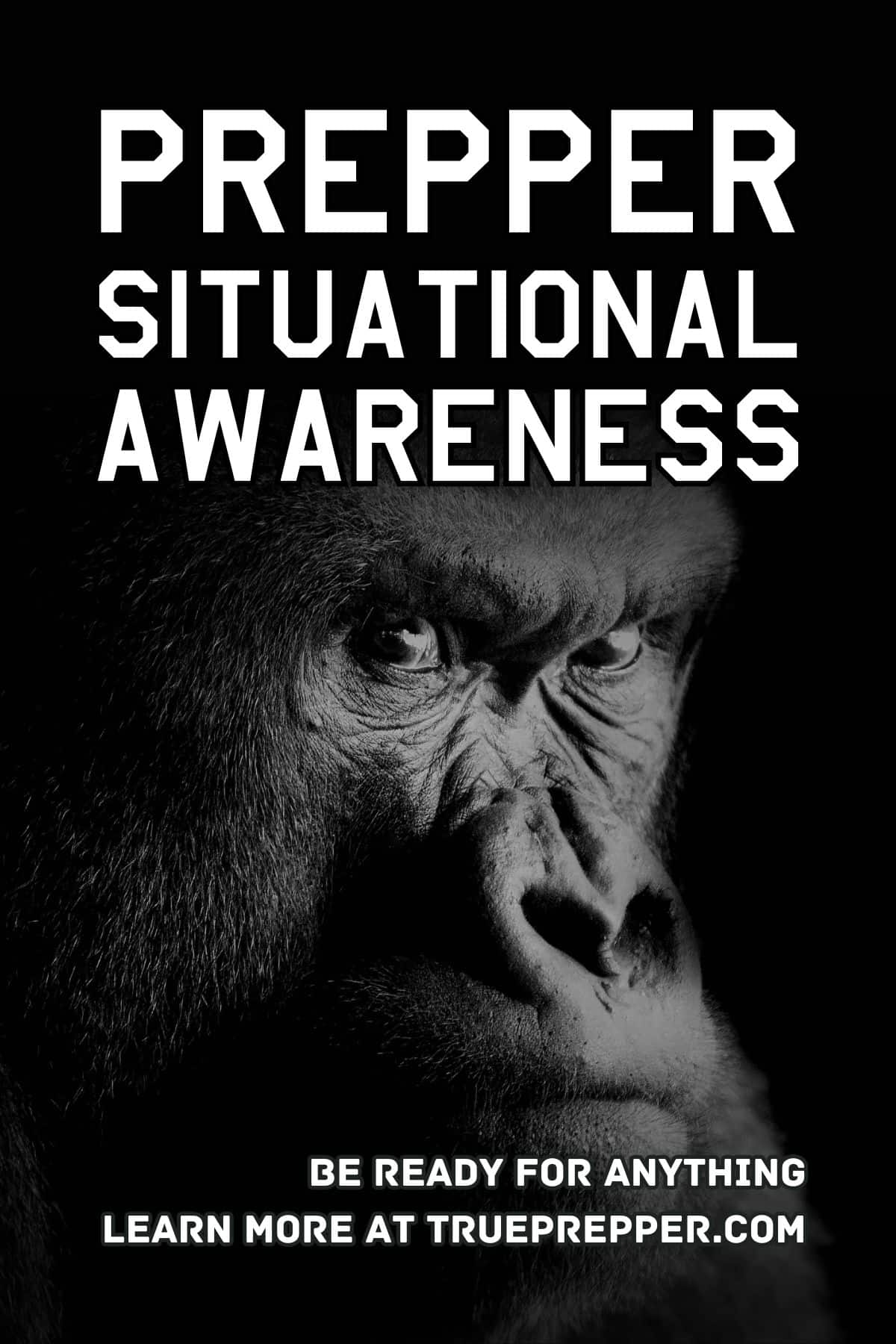
Understanding what is happening around you is crucial for preppers. Prepper situational awareness involves recognizing potential threats, evaluating your position in relation to those threats, and strategizing ways to prevent or minimize them.
Levels of Situational Awareness
Situational awareness is often categorized into five color-coded levels known as Cooper's Color Code, named after the Marine who developed it:
- White (Tuned Out) – Unaware and off guard.
- Yellow (Alert) – Aware and periodically scanning for changes.
- Orange (Focused) – Attentive and monitoring specific threats.
- Red (Active) – Responding to threats.
- Black (Panic) – Mental and physical breakdown.
Mastering the ability to identify your current level of awareness and adapt as needed is a skill that requires practice and dedication.
The OODA Loop
The OODA (Observe, Orient, Decide, Act) loop is a decision-making tool essential for situational awareness. Developed by military strategists, it helps individuals filter information, make decisions, and take action effectively.
Observing your surroundings, orienting yourself to potential threats, making informed decisions, and acting promptly are key components of the OODA loop.
Observe
Start by gathering information about your environment. Stay vigilant and use all your senses to detect any unusual activities or sounds that could indicate a potential threat.

Orient
If something seems out of place during observation, take a moment to analyze the situation and predict potential hazards. Quick pattern recognition is crucial at this stage.
Decide
Based on your assessment, make a decision on how to respond. Trust your instincts, observations, and expectations to choose the best course of action.
Remember, perfect information is rare, so decisive action is often better than indecision.
Act
Execute your decision and observe the outcomes. If needed, be prepared to restart the loop by adjusting your actions based on the results.
Prediction and Pattern Detection
Predicting potential scenarios relies on a combination of knowledge and experience. Understanding historical patterns and using pattern detection techniques can help preppers anticipate and prepare for various situations.
By studying people's behavior and movements, preppers can enhance their situational awareness and identify potential threats before they escalate.
Common Barriers to Situational Awareness
Fallible Intuition
Intuition can sometimes lead to errors in judgment, as our brains prioritize speed over accuracy in processing information. It's essential to be aware of the limitations of intuition and validate assumptions through critical thinking.
Inattentional Blindness
Inattentional blindness is a phenomenon where individuals overlook significant details due to focus or distraction. Testing your attention to detail can highlight the importance of staying alert and avoiding cognitive blind spots.
Application to Preppers
Improving situational awareness is an ongoing process that requires practice and mindfulness. By prioritizing relevant information and training your brain to focus on critical details, preppers can enhance their ability to detect potential threats effectively.
Conclusion
Continuous improvement is key to mastering prepper situational awareness. Practice, experience, and staying prepared contribute to sharpening your skills and maintaining a high level of vigilance. Remember, there is always room for improvement, and staying alert can make a significant difference in challenging situations.
For more insightful guides on preparedness, check out the following resources:
- Prepper Color Coding | How To Get Organized
- Prepper Mindfulness | Zen in Prepping
- Why You Should Be Prepping for Emergencies
Stay informed, stay vigilant, and stay safe.
—————————————————————————————————————————————————————————————–
By: Sean Gold
Title: Enhancing Your Prepper Situational Awareness Skills
Sourced From: trueprepper.com/situational-awareness/
Published Date: Tue, 30 Apr 2024 11:26:10 +0000

